The Benefits of Walking - A Q&A with Ross MacRae
08 May, 20256 mins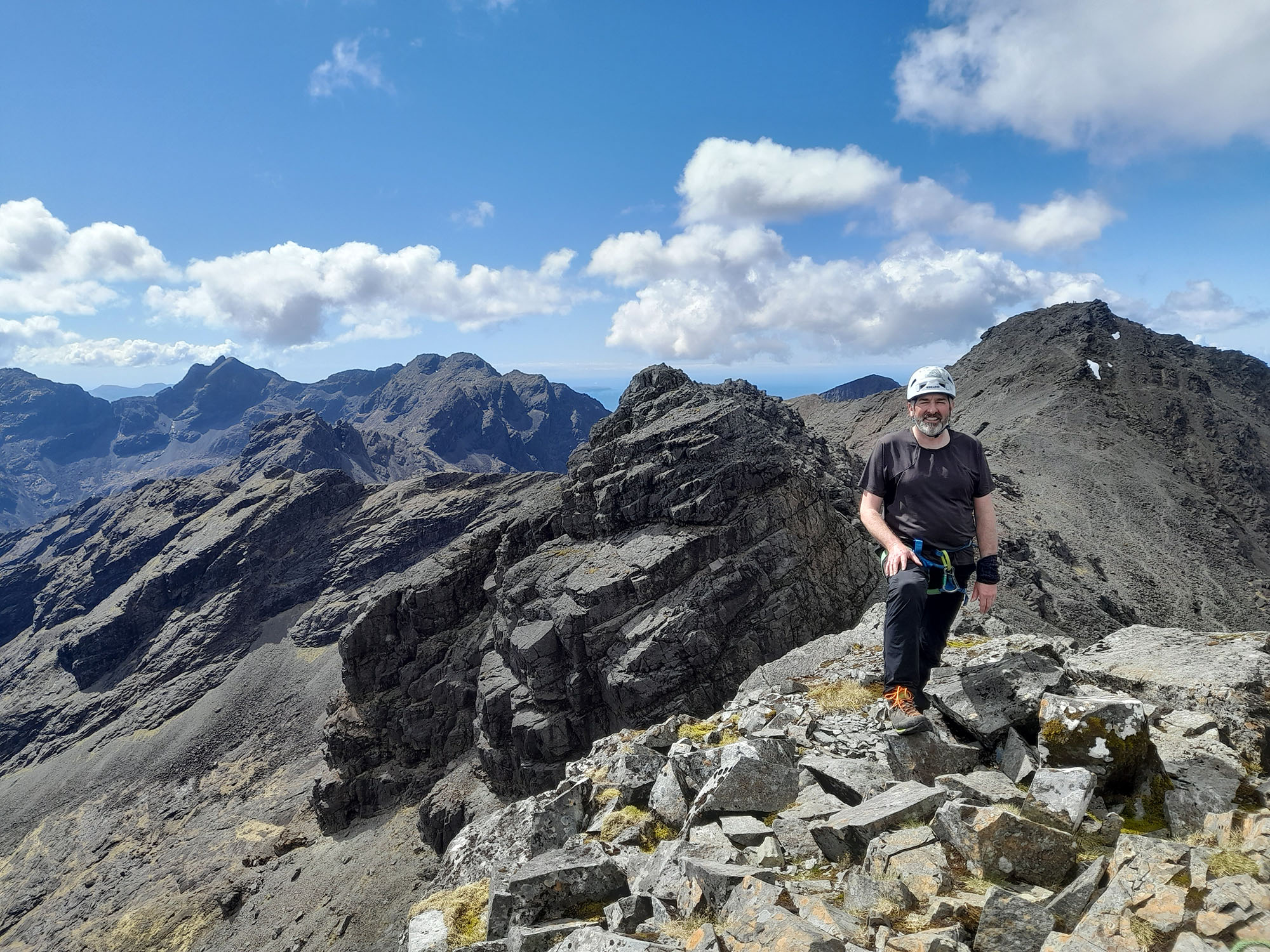
May marks National Walking Month. It’s an annual event that encourages people to walk more to improve physical and mental health. It's a great opportunity to explore your local area, join walking challenges, or simply make walking a regular part of your day.
In order to highlight the importance of walking for one’s self-improvement, we sat down with Orion’s resident hillwalker and Group HR Director and Deputy MD, Ross MacRae, to ask him what walking means to him and what benefits affect him personally. Ross has a wealth of experience in the Scottish hills, conquering Scotland’s many Munros (mountains over 3000ft), and can be found out and about on some remote location practically every weekend, come rain or shine, snow or wind (usually in the same day!). Here’s what he had to say:
Q. What first inspired you to take up hill walking and then onto Munro bagging?
While I have always enjoyed the great outdoors, my hill walking started in response to being unable to do other activities. About 8 years ago, my knees became painful when I was running or playing squash. I stopped both before seeking help and was diagnosed with early stages of osteoarthritis. Advice on how to manage osteoarthritis in knees is poor so I decided that strengthening the muscles around them was best and, as I am a terrible swimmer, I felt walking was the best way to retain and build leg muscle without major joint impact. Over a period of months, I went from pain going up a single flight of stairs to long forest walks without any pain followed by small hills and then Munros. With a strong aversion to exposed heights and knees with a limited shelf life, I was reluctant to call myself a Munro bagger even though I knew I was hooked to the incredible views and challenges. I must have been approaching one hundred Munros before I conceded that I was a bagger but, even though my exposure struggles had reduced, I still had concerns that I would not be able to climb the dozen or so toughest mountains and complete my round.
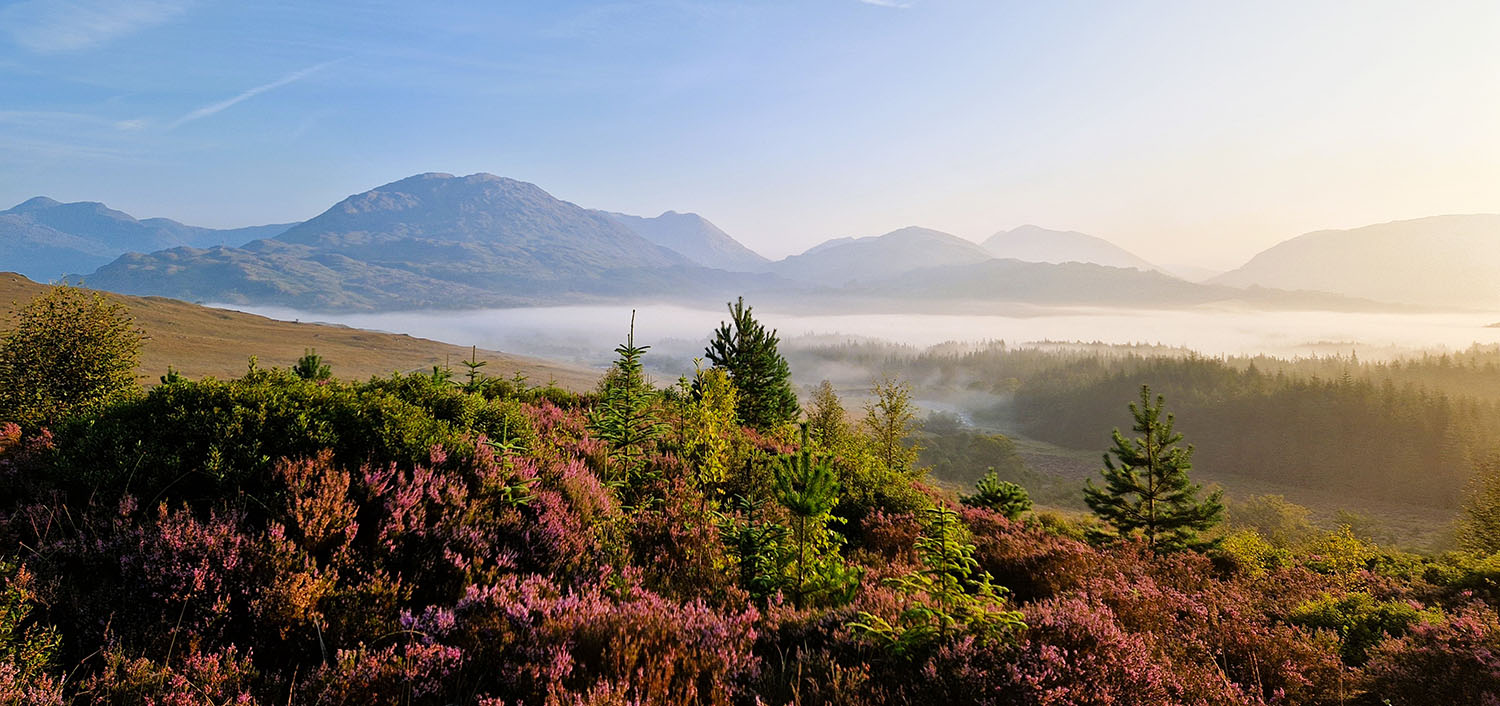
Morning mist clearing from the lower slopes of the tough Sgurr Ghiubhsachain round near Glenfinnan
Q. How did your passion for hill walking develop over time, to where you are now bagging for fun?
My passion for hill walking developed fast even though my relative hill fitness came later. The great expanses, variable conditions and just being outside felt right and I knew I wanted to do as much of it as possible. Over a period of eighteen months or so, I went from hiking every few weeks to hiking every weekend which I have maintained now for the last six years. I don’t think you ever tire of the scenery though your desire to go out in the dark, cold, wet or windy days may decrease a little. Along with improved fitness to walk longer hikes with more ascent, route finding efficiency and terrain awareness, pacing, kit and fuelling knowledge also help ease the challenge.
Q. When did you complete your Munro round and what are your current targets?
I completed my round between 2019 and 2023. While climbing Munros, I was climbing other hills too, so it was natural for me to progress to bagging Corbetts (mountains between 2,500 and 3,000 feet). If I am able, I would love to climb all the Corbetts, Munros, Donalds, Grahams (Fionas) and Furths within ten years as there is only a dozen or so people recorded as having completed this. I am about two thirds of the way and am currently on target time wise, but I still have 305 of 826 hills to climb so it’s a tough ask over the next few years.
Q. You’ve been all over Scotland over the years – what’s your favourite Munro or route, and why?
I find the weather defines the day as much as the mountain complexity, views and terrain. I tend to remember days with extremes – either the sunny days (winter or summer) with good visibility or the wild stormy days that were a fight to finish.
I saved a trip to the wilds of Knoydart to complete my Munro round. I had an incredible sunny t-shirt weather day to climb first Meall Bhuidhe and then Luinne Bheinn to finish. This was followed by dinner and drinks in the UK’s most remote pub and a ceilidh at Inverie Hall. Bla Bheinn on Skye is up there on my list too as you have incredible views of the Cuillin Ridge and, from the summit, you can see the Isle of Rassay where I grew up.

Classic Rois-Bheinn round from Inverailort showing off the Western seaboard
Q. How do you choose your walking routes? Do you prefer well-known paths or discovering new, lesser-known trails?
It’s a real mix. Without being a rock climber, some mountains only have one or two sensible routes to climb. Almost all the Munros have well-trodden paths, so you invariably stick with them although I am prone to hooking in another hill, reversing a route or taking a detour to keep things interesting. With the Corbetts and other hills, there are frequently no paths so there is much more route finding on the ground. When it comes to the Grahams (or Fionas), many don’t have any established routes, so you plan your ascent from scratch. Having lots of routing variety helps me maintain a keen interest and I really do enjoy working out routes in the days leading up to a hike. Ideally, a trail will be very quiet, dry, well established and on varied terrain. The very best routes for me also have a feeling of remoteness.
Q. How do you manage navigation in remote areas without phone signal?
I never rely on my phone – it is just a backup navigation tool and an emergency communication device which I keep on airplane mode to conserve battery. For bigger more involved days, I’ll take a map and compass, but my standard assist is a four-season GPS with Ordnance Survey mapping. These maps are also downloaded on my phone too so can be read without a phone signal. While I can take bearings from a map, it is easier with GPS particularly in fog or snow.
Q. Have you learned scrambling or other technical skills for tougher Munros?
I really enjoy simple scrambling but struggle with big exposure. Simple moves involving smearing, mantling, edging or hooking are all used from time to time. To become a Munro Compleator, you have to climb the narrow East Ridge of the In Pinn on Sgurr Dearg which is a moderate 200-foot rock climb with terrifying exposure. If you aren’t a rock climber, you need a professional guide to manage the kit and belay you. I can’t say I overly enjoyed the climb, but it was great abseiling off.
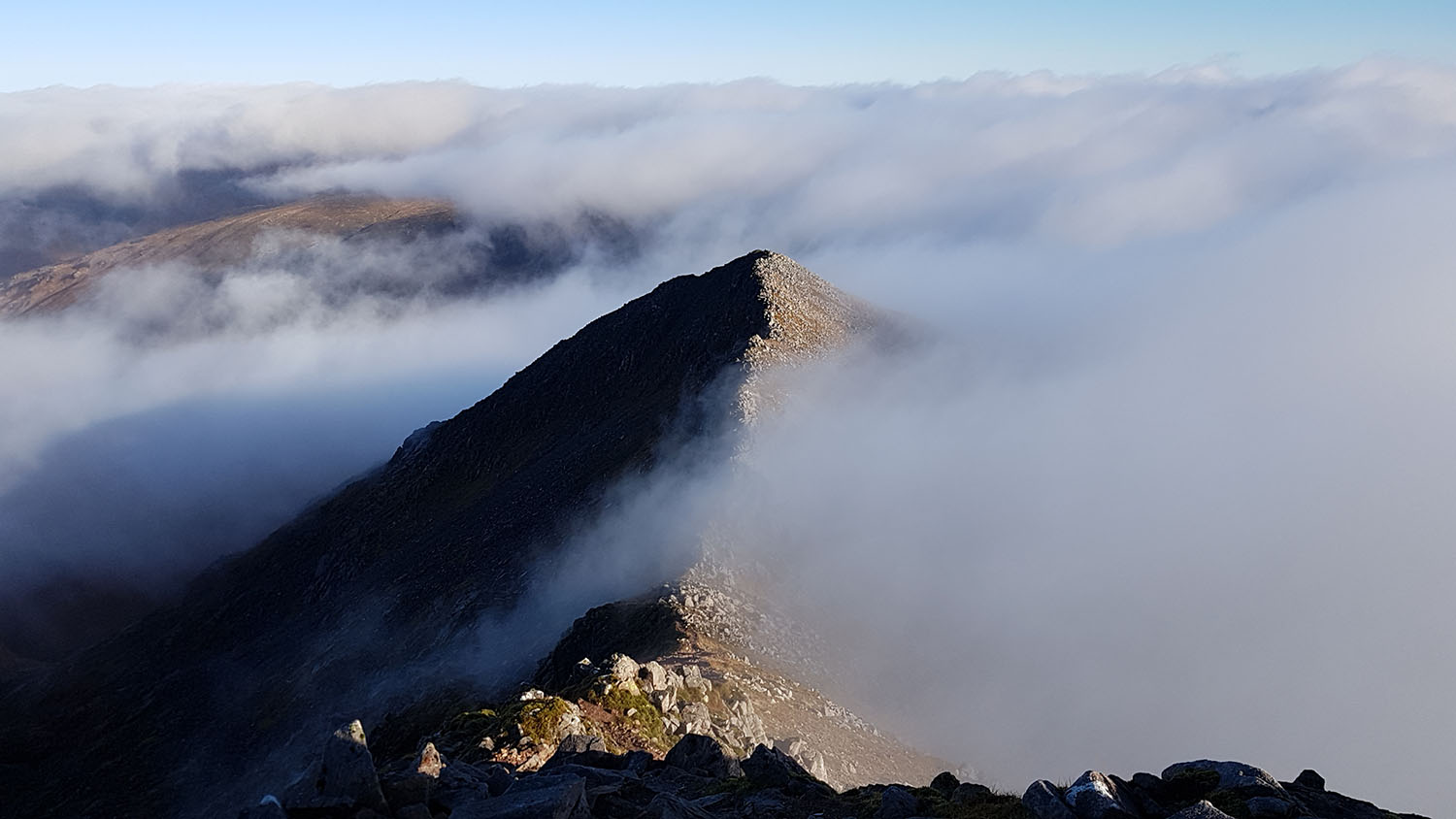
Mist crossing one of the ridges near Munro Ben Starav in Glen Coe
Q. How do you deal with sudden changes in weather on the mountains?
One thing you can guarantee in Scotland is that the weather will change, and it doesn’t usually get better. If you are spending time in the mountains, it is important to have the right kit. It might be 10°C in the glen but it could be below freezing on the hill or even colder if there is strong windchill. I’ve been in a -25°C windchill and it stings exposed skin very quickly. Wicking base layers, insulating mid layers and hardshell waterproofs are needed along with gloves and hats. Don’t forget decent footwear and goggles, ice axe and crampons for half the year when there is snow and ice around (note this isn’t a complete list of what to take into the hills, other kit is also required). I find that freezing rain is the toughest condition to manage as it draws all the heat from your body and keeping moving is about the only way you can genuinely stay warm.
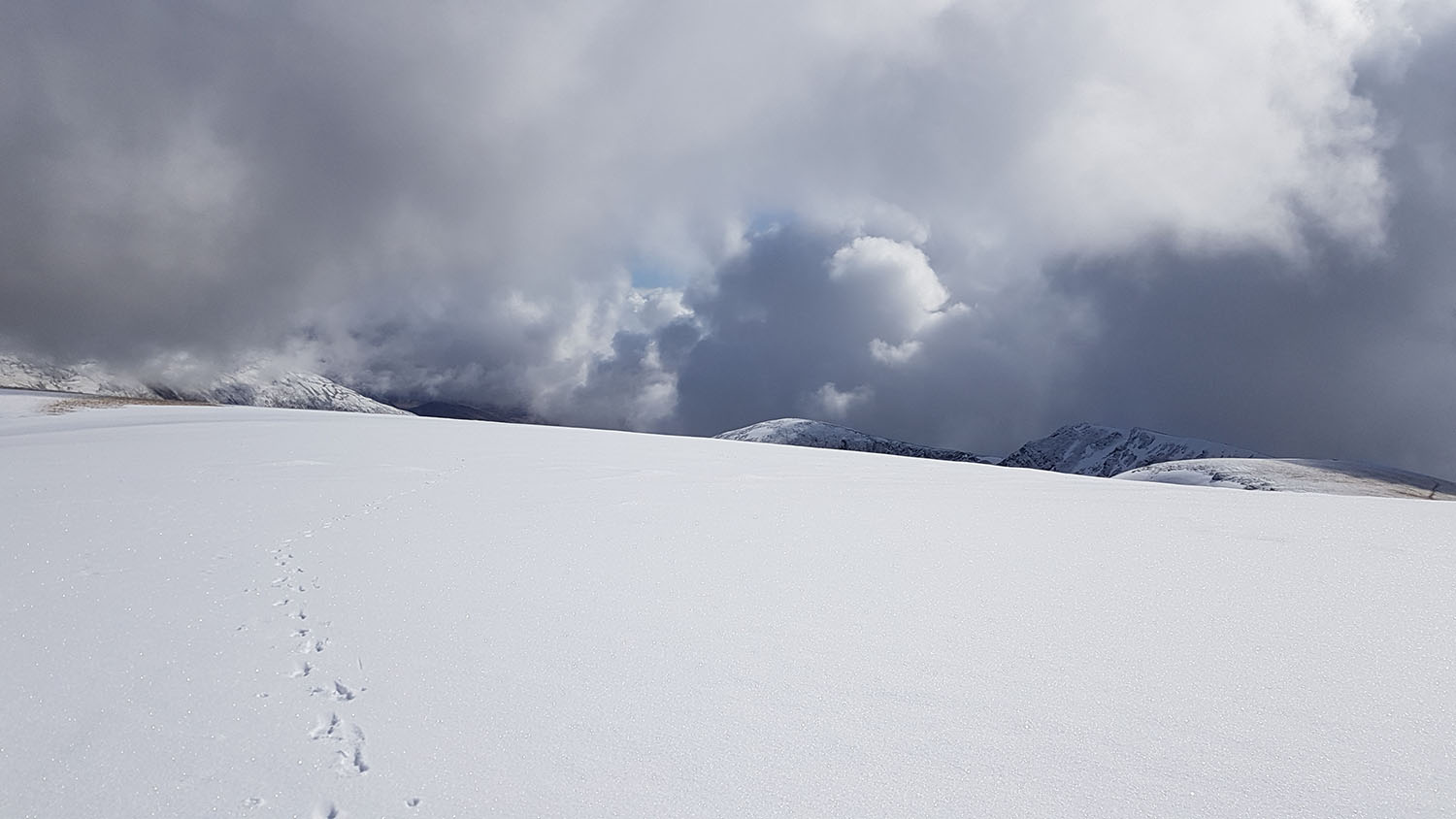
Plenty of snow in May on the Creag Meagaidh circuit of three Munros at Loch Laggan
It is also important to know your limits and check the forecast before your hike. If conditions are deteriorating fast, you may elect to turn back or take a simpler route. Thunderstorms and storm winds are terrifying on a mountain and if you have some doubts about the weather, it may best to stay at home.
Q. Do you walk alone, with friends, or as part of a group? How does the experience differ?
I almost always hike on my own. I didn’t set out to do that, but I do enjoy the solitude and opportunity to set my own routes. I can also go at my own hiking pace and avoid the inevitable ‘debates’ when route finding or conditions become challenging. I have however climbed hills with dozens or people and really enjoy the company. Most have less experience, so I tend to lead and feel responsible for their welfare. Several family members now hike, and I love them coming with me particularly on camping expeditions. At the end of the day, it is always nice to share an experience. Gauging what route is appropriate for somebody is important and my very early morning starts at 430am are not popular, so I do moderate the day accordingly.
Q. How does being outdoors and walking in nature affect your wellbeing?
Being outdoors has always had a positive impact on me. It lifts my mood and encourages me to be active. I love the feel of the wind on my face and, as we don’t get much, the sun on my back. Physical activity obviously helps with a range of health matters such as cardiovascular, reduces stress and provides lots of quality thinking time. I sleep better too!
Q. What does walking in the hills mean to you personally - physically, mentally, and emotionally?
While I can’t claim to be any kind of sporting champion, I have always been physically active and enjoyed being outdoors, so hill walking is a natural fit for me. When I was young, I camped, had outdoors jobs and lived in a remote island so, in some ways, I am reuniting with nature when I get into the hills. If I was measured in a Belbin model, I would be deemed a ‘Completer-Finisher’, so bagging hills is a natural satisfier for me. I also visit some amazing locations around Scotland and really enjoy combining a few days hiking together to make a bit of an adventure.
Q. Are there any hills, mountains, or routes still on your bucket list?
There are. I have now climbed all the Munros, two thirds of the Corbetts, a quarter of the Grahams (Fionas) and a third of the Donalds. If you throw in the Furths (Munros outside Scotland in the UK and Ireland) then I still have 305 hills of 826 listed hills to climb. I would also love to do some through walking of some of the ancient cattle drover routes, but we’ll see how long my knees last. I still have 73 Corbetts to climb so that will keep me busy for the rest of this year and probably into next year.
Q. What keeps you motivated to keep bagging hills?
Hill walking is a major pastime for me. On average I spend fifteen hours a week on it, so it is a big part of my life. It provides lots of things including a connection with the outdoors, routine, challenge, goals, physical and mental wellbeing, scenery, adventures, route planning, kit buying and something I share with my son and brother.
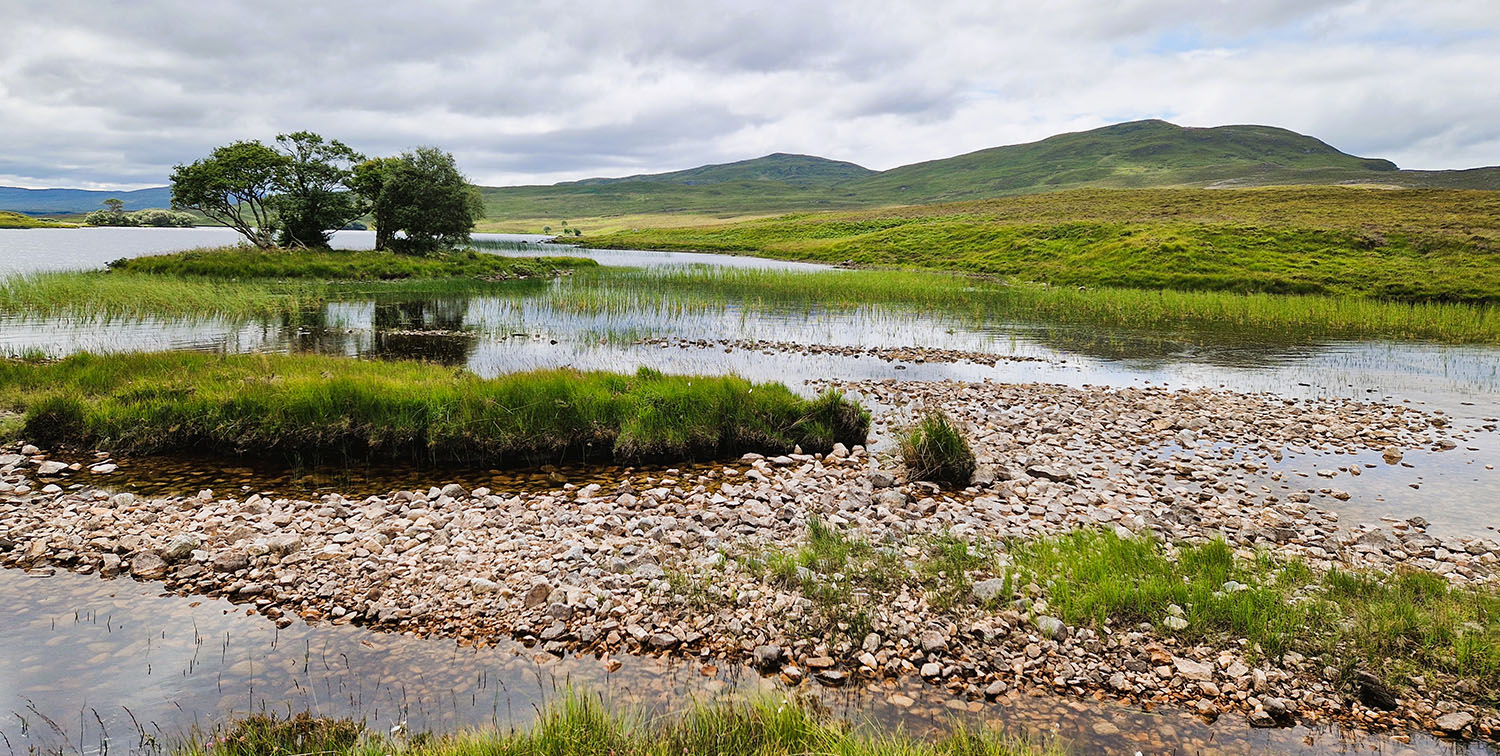
The suitably named Loch Awe passed on the walk to the Corbett Canisp in Assynt
Q. How many hills have you now climbed, and will you reach any milestones during walking month?
I track my climbing and have now climbed 585 hills over the last seven years or so. This year, I am on track to beat my annual distance, ascent and total hills record of 615 miles, 60,415 metres and 100 hills.
During walking month this year, I should edge past 200,000 metres of ascent over the last few years which is about 60 Everest Base Camp to summit climbs. I should also move past 350 days of hiking and 3,500 miles of walking.
Q. During national walking month, what advice would you give someone who is yet to experience hill walking and is going out for the first time?
Do not be too ambitious and consider your fitness level. Always check the hill weather and ensure you have appropriate kit. There is a wealth of excellent information out there on knowledgeable websites such as Mountaineering Scotland and Scottish Mountain Rescue so do your research and be prepared. Also leave a note of where you are going and when you intend to be back and be proficient in map reading. Most of all, enjoy the wonderful hills and all the great outdoors has to offer.



